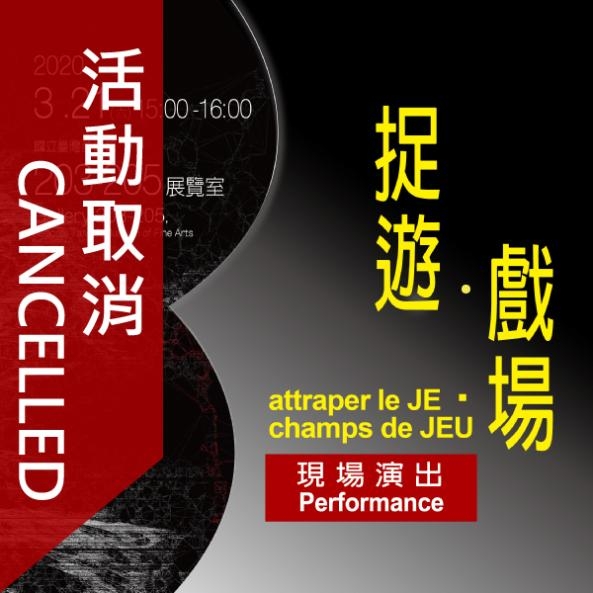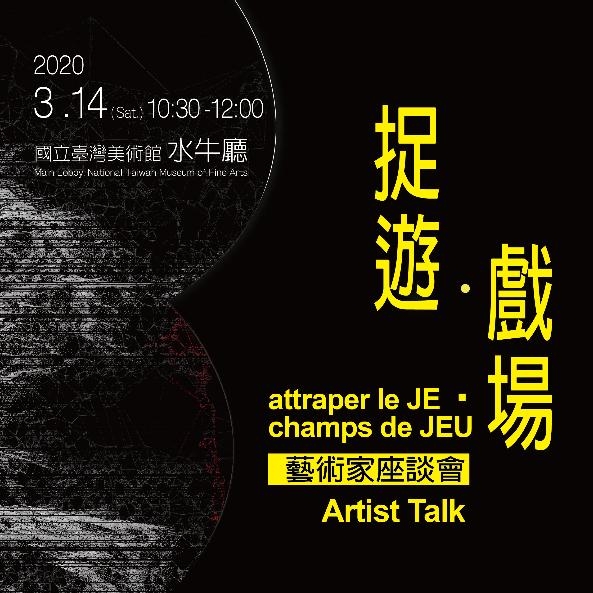-
 Organizer
:
National Taiwan Museum of Fine Arts
Organizer
:
National Taiwan Museum of Fine Arts
-
 Contact Us
:
展覽組 賴先生#316、修小姐#708
Contact Us
:
展覽組 賴先生#316、修小姐#708
Sound is an essential part of life and forms the core of this exhibition which brings together digital technologies and new possibilities for sound creation. Digital sound artists active in contemporary and prestigious sound research institutes, are invited to present works for this exhibition. Some of the included works have been performed at philharmonie de Paris or honored at the Cannes Film Festival. Based on these works, sound patterns are not only used in music, but also in new and innovative forms of artistic expression.
Sound lines
Immersive sound installations convey and subvert the conventional, transforming internal sound pathways into pathway diagrams and complex spaces. Immersive sound experiences are a relatively new and expensive form of sound installation. Putting on a VR headset, and entering a 360-degree virtual world, the audience are able to experience immersive sound installations that stimulate the imagination and new ideas.
Technological research and sound environments
When there are changes in the relationships between autonomous and objective environments, new relationships emerge. The exhibited works are mainly immersive sound experiences, creating a sensory duality within the tangible environment of the individual and the other. Everything is dynamic and changes over time, leading to the feeling of immersion and changes in physical properties. Through precise calculation and composition, these changes are presented as complex spatial shifts of nodal points, changing field coordinates, and optical illusions.
Research directions and technological developments
Development of digital computing methods has changed the nature of sound and provided possibilities for the opening of structural routes and subversion of auditory spaces. By simulating current situations and creating new vector spaces that satisfy the imagination and expectations, immersion produces hidden and rational imagery. The openness and hiddenness of a closed space leads to unconscious flow and thought. The development of sound-related technologies has brought about changing positions and flows, with endless variations in computational flow, expanding, moving forward, and deriving.
Noise and psychological factors
In most discussions on sound and psychology, the focus is on environmental noise and the direct psychological responses to it. The accumulation and repetition of noise gradually lead to various forms of psychological venting. The promotion of technological products have become notable, resulting in changing customers’ preferences. Operators delight in manipulating virtual worlds, with the allure of associated inertia and confusion. Sound and audio online platforms satisfy the needs for expression and concealment, providing real-time feedback and triggering change, becoming open and lively, and bringing delight and joy. At the same time, they draw on unlimited darkness. Such reverberating dialogues are created by artists through new media.
Relationships between spatial sounds and exhibition spaces
In terms of digital sound algorithms for space building, artists use various technologies and creative methods. With new technologies, they create new thoughts on space. Digital computing provides audiovisual code to link visual and auditory communications and ideas, conveying new messages. Against the backdrop of differing data operations, this exhibition seeks intangible conversation spaces to present new technological creations and developments. Through the presentation of sound technologies and visual connections, new trends and forward-looking works are created.
Sound installations and performances
The formulation of sound should not be limited to conventional framing methods. Within 360-degree surround sound immersive experiences, changes in spatial relationships occur with exhibition spaces no longer planned or divided. Sound can become systems and expanded forms. Shifts in viewing position lead to shifts in opposing spaces. Therefore, the definition of space can change through sound. In shifting sound spaces, we determine directional axes. Performers guide new dynamics, integrating instrumental music to create powerful sounds. New works are produced based on installation mechanisms, artist characteristics, and creative talent, which breaks the notion that installation belongs to a single artist’s work. At the same time, viewers experience the many aspects of installations.
The participating artists in this exhibition are from France, Germany, Spain, England, Canada, Japan and Taiwan. With sound as the basis, eight different acoustic spaces are formed, each incorporating different roles of sound and different technologies to present digital works that integrate visual aspects. Immersive sound installation systems are presented as performances during the exhibition opening.
In contrast to past exhibitions and performances of visual creations in physical spaces, sound is the guiding factor of this exhibition. A 17-speaker installation provides an immersive, virtual, and multipurpose space, a boundless space that features sound delays like those experienced in a cathedral. Connotative sounds of a single audio frequency, echoes of spaces in the universe that are collapsed and flipped, VR epidermis sound loops, sounds that bring to mind a pipeline between Russia and Germany, transmission of online audio messages, and computations of positioning information transformed into acoustic events are representative of contemporary sound development. This exhibition features international perspectives, interdisciplinary performances, and communication platforms.
|Artists|
Gregory CHATONSKY (France/Canada)
Po-Hao CHI (Taiwan)
HUMATIC (Christian Graupner & Veruschka Bohn) (Germany)
Ryoichi KUROKAWA (Japan)
Elías MERINO (Spanish/U.K)
Olivier PASQUET (France)
Yu-Chuan TSENG / Kung-Ta TSENG / Yi-Ching HUANG (Taiwan)
Sueya WANG+Craphone LIU (Taiwan)
Artist Talk
Time:2020/3/14(Sat.) 10:30-12:00
Venue: Auditorium, National Taiwan Museum of Fine Arts
Performance
Time:2020/3/14(Sat.) 16:15-17:00
Venue: National Taiwan Museum of Fine Arts 203-205 Gallery
1. Olivier PASQUET: Herbig-Haro(HH)
2. Elías MERINO: Synthesis of Unlocated Affections: thingness
3. HUMATIC (Christian Graupner & Veruschka Bohn): Code Act
Time:2020/3/21(Sat.) 15:00-16:00
Venue: National Taiwan Museum of Fine Arts 203-205 Gallery
1. Sueya WANG, Craphone LIU: danse lévitation
Musician: Hsin-Chun CHOU(Percussionist), Kuan LIN(Saxophonist), Shang-Wu WU(Violinist), Yi-Hsuan LAI(Violinist), Chih-Yu LAI(Tubaist)
Duration|2020 / 0 3/ 14 (Sat.) −2020/ 06 / 07 (Sun.)
Opening|2020 / 0 3/ 14 (Sat.)
Venue|National Taiwan Museum of Fine Arts 203-205 Gallery
Supervisor|Ministry of Culture
Organizer|National Taiwan Museum of Fine Arts
Technical Support|C Lab Taiwan Sound Lab
Sponsor|Dr. Tsungming Tu Foundation
Curator|Sueya WANG


